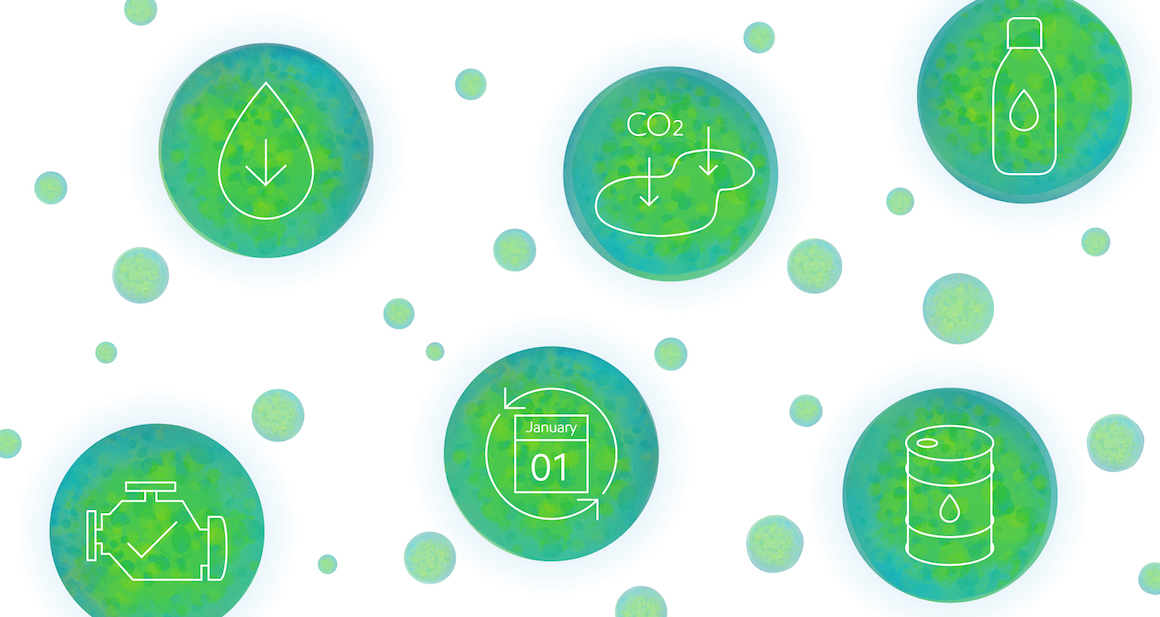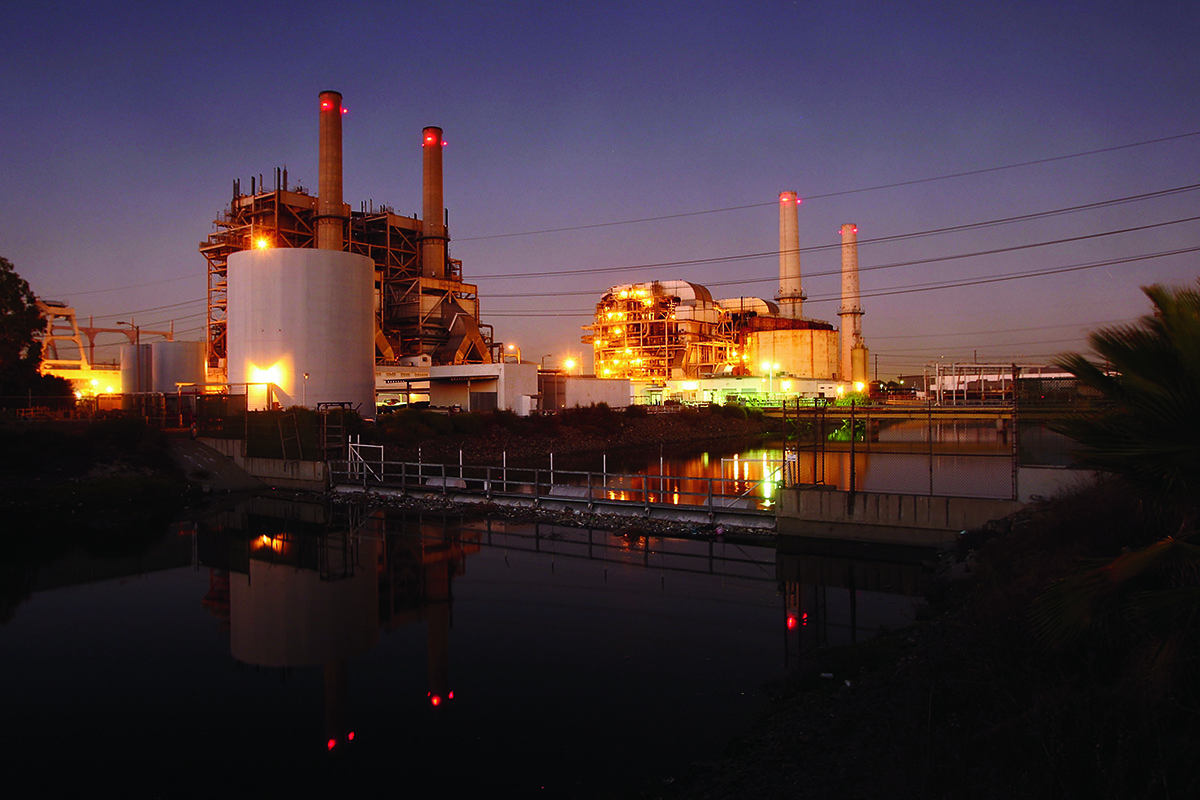Researching a Sustainable Energy Solution with Metal-Organic Frameworks
Driving energy innovation with CCS solutions

Scroll down
Efficiently strip more than0of carbon dioxide emitted by natural gas-fired power plants



A new family of materials could help transform how the world reduces emissions.
Researchers at the University of California, Berkeley, and ExxonMobil have developed a new material called metal-organic frameworks, or MOFs. Research is still in the early phase, but if commercialized, these MOFs could help capture more than 90% of the carbon dioxide (CO2) natural gas power plants produce to generate electricity. That’s quite an achievement, because CO2 in these natural gas streams is greatly diluted compared to that of exhaust streams from coal-powered plants, so removing these molecules can be challenging.
Research results have been peer reviewed and published in Science, one of the world’s leading scientific journals. And it’s yet another result of ExxonMobil’s diverse portfolio of research focused on carbon capture and storage (CCS) technologies.
CCS describes a collection of technologies that can remove CO2 emissions before they reach the atmosphere. That CO2 is then safely and permanently stored in depleted oil and natural gas reservoirs deep underground. One potential use of CCS is to capture emissions in the exhaust streams of power plants, which account for around 25% of global CO2 emissions.
Alongside renewables like solar and wind power, low-emission fuels and hydrogen, CCS is critical to helping reach society’s goal of a lower-carbon energy future. The International Energy Agency has reported that the emission-reduction targets in the Paris Agreement cannot be met without CCS1. And a recent Princeton University study concluded that the expansion of power plants – coupled with carbon capture and nuclear power – is key to forging affordable pathways toward net zero.
CCS is not new. ExxonMobil is the global leader in CCS technology, having captured more than 120 million metric tons2 of CO2 over the past 30 years. But what’s new about the Berkeley-ExxonMobil breakthrough is the unique molecular structure of this porous material, which could be tailored to work in a wide range of facilities that emit CO2.
While promising, the MOF work is in its early stages and is part of longer-term research into fundamental science to support lower-emission technologies. ExxonMobil’s focus on fundamental science – part of the company’s industry-leading R&D portfolio – includes research led by the company’s in-house scientists and with universities, national labs and other corporate partners.



Overcoming challenges to sustainable energy access and consumption
U.S. and Europe
This year alone, new natural gas-fired power plants in the United States and Europe will generate 31 gigawatts of electricity.
ASIA
Another 10 gigawatts will come online from natural gas-fired power plants across Asia.5
India
In India, where rolling blackouts impact millions of people6, plans are in development to boost power production by doubling the share of natural gas in the country’s energy mix.7
By 2040, global electricity demand is projected to rise by 60%
Demand for energy – including electricity – will increase as communities recover from the pandemic and living standards continue to improve. In fact, by 2040 global electricity demand is projected to rise by 60%,3 and natural gas will generate a growing portion of that new output. But with power generation accounting for a quarter of the world’s greenhouse gas (GHG) emissions4, the challenge is meeting that demand for safe and reliable electricity while mitigating the risks associated with climate change.
Demand for energy – including electricity – will increase as communities recover from the pandemic and living standards continue to improve. In fact, by 2040 global electricity demand is projected to rise by 60%,3 and natural gas will generate a growing portion of that new output. But with power generation accounting for a quarter of the world’s greenhouse gas (GHG) emissions4, the challenge is meeting that demand for safe and reliable electricity while mitigating the risks associated with climate change.
To live up to its promise, CCS has to capture more CO2 with less energy, and that’s the challenge researchers at Berkeley and ExxonMobil are working to meet with their ongoing research of this breakthrough MOF.
For more on the scientists and their carbon-capturing MOF, scroll down.
What are MOFs, and why could they be a powerful climate change solution?
For more than eight years, two scientists – Jeffrey Long of UC Berkeley and Simon Weston at ExxonMobil – and their teams have tested and retested their hypotheses of using MOFs’ porous structure to capture CO2 efficiently.
The MOF is...
LARGE AND POROUS
At a molecular level, MOFs have some of the largest internal surface areas known to man. Unfolded, a gram of the material, roughly the weight of a paper clip, could cover an entire football field. The MOF’s honeycomb structure of nano-sized pores can capture CO2 emissions like a sponge, and the high surface area-to-volume ratio makes it a potentially ideal material to support and improve current CCS technology.

VERSATILE & REUSABLE
MOFs can be designed using chemistry to create highly customizable materials that show promise in many applications, including CCS. At low temperatures, the molecules in the MOF form a solid bond with the CO2. Moderate heat then strips the CO2 molecules away to be collected and stored. Once cleared of the CO2, the MOF returns to its original state, making the material reusable even after repeated contact with the heat and steam that sweeps out the captured emission.

MIRRORED BY NATURE
The MOF’s pores are also lined with specific amine molecules that grab CO2 selectively through a unique mechanism. This capture mechanism resembles RuBisCO, a key enzyme found in plants that’s responsible for one of the most effective carbon capture processes in nature: photosynthesis.

EFFICIENT
Mirroring a naturally occurring process known as cooperative binding, capturing a single CO2 molecule makes it easier for the MOF to bind other CO2 molecules until they are fully saturated. The capture process is also energy efficient, since collecting the CO2 off the material only requires steam that’s already widely available in natural gas-fired power plants.

The research continues, but Long and Weston show that energy-efficient CCS by using MOFs may be possible.
The journey to researching a sustainable energy solution
The prospect of a “eureka moment” wasn’t what drove Long, Weston and members of their teams to become scientists. Like many of their peers, they set out to build on their predecessors’ work to contribute to understanding complex chemistry issues. While Long and Weston hoped their contributions would pave the way to a major discovery, they knew this line of work often takes years, if not decades.
So, when their work led to a discovery that could help solve one of the world’s most urgent environmental challenges, it made for a truly life-changing moment.
Watch Weston, Long and Eugene Kim, a member of Long’s research team who played a critical role in helping drive this discovery, explain what science means to them. Also, learn more about how the MOF they helped develop could turn natural gas into an even lower-emission fuel.

The chance to work on climate change, on CO2 capture specifically, and knowing that it could make a big difference to the world is an amazing opportunity.
What's next?
More research is required before the scientists and their teams can use their MOF at a prototype plant to test its performance in a real-world environment. Accelerating the deployment of CCS also requires the right set of regulatory and policy frameworks, including fiscal incentives, to spur investments in widespread CCS infrastructure.
Still, Long and Weston’s research confirms that science and its deliberate process will continue to drive the world’s transition to a lower-carbon energy future.
Scroll to the bottom of the page to subscribe to the Energy Factor Europe and stay up-to-date with our progress on CCS technology.
1. International Energy Agency (IEA), “The world needs to build on the growing momentum behind carbon capture” https://www.iea.org/news/the-world-needs-to-build-on-the-growing-momentum-behind-carbon-capture
2. ExxonMobil, Exxonmobil.com https://corporate.exxonmobil.com/Energy-and-innovation/Carbon-capture-and-storage
3. International Energy Agency (IEA), “Electricity Market Report – December 2020” https://www.iea.org/reports/electricity-market-report-december-2020/outlook-2021
4. International Energy Agency (IEA), “Electricity Market Report – December 2020” https://www.iea.org/reports/electricity-market-report-december-2020/outlook-2021
5. International Energy Agency (IEA), “Electricity Market Report – December 2020” https://www.iea.org/reports/electricity-market-report-december-2020/outlook-2021
6. Council on Energy Environment and Water (CEEW), “State of Electricity Access in India – October 2020” https://www.ceew.in/sites/default/files/CEEW%20-%20India%20Residential%20Energy%20Survey%20-%20State%20of%20Electricity%20Access%20%2005Oct20.pdf
7. International Energy Agency (IEA), “India Energy Outlook 2021” https://www.iea.org/reports/india-energy-outlook-2021





